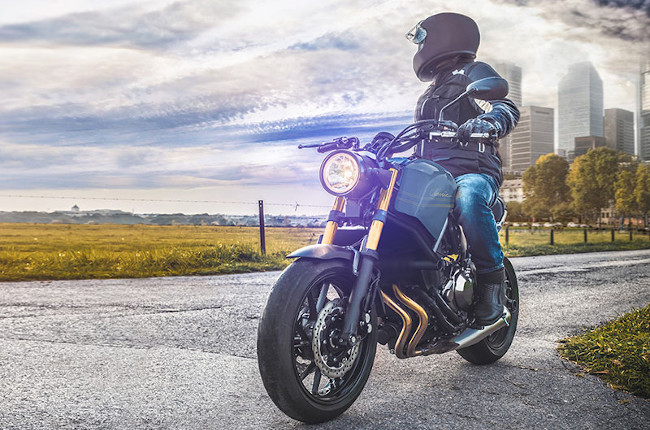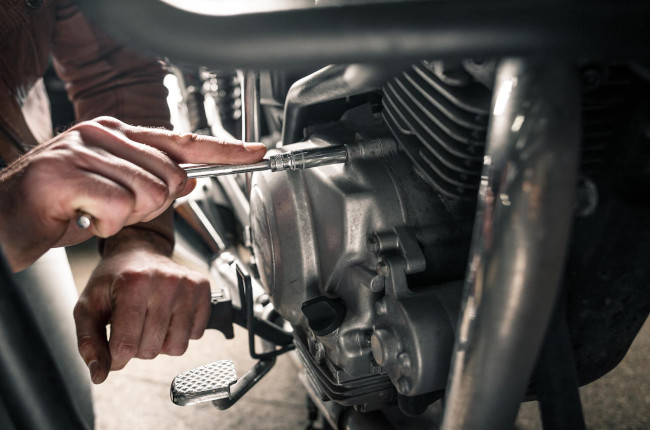What to do when your motorcycle overheats
The solution is much simpler than it seems.

Having a motorcycle overheat on you can be troublesome at best. Whether we’ve heard it from a friend or experienced it ourselves, managing an overheated motorcycle can be quite perplexing at first. Oftentimes, instinct would tell us to rest the engine and let it cool, only to proceed with riding once again. However, this may not always be the best nor the most responsible way to handle an overheated engine.
Overheating is almost always a symptom of a more predominant problem on your motorcycle. Thus, eventually locating and fixing the root cause can provide a long-term solution to an overheating problem. However, when push comes to shove and your motorcycle engine overheats during a ride out, understanding exactly what can and should be done can save you from long hours on the side of the road and hit-and-miss repairs. Here’s what you can do about an overheating motorcycle engine.
Identifying an overheating engine

Before jumping straight into diagnosis and solutions, it’s first important to understand how an engine starts to overheat. For many riders out there with modern motorcycles, the answer can be as simple as an engine overheat warning or warning light on the display, or the gauge shooting up to the top. Many other riders, on the other hand, may be riding on a machine that does not have modern electronics. For these situations, it’s important to understand some of the symptoms of an overheating engine.
Apart from noticing extremely hot air around the engine, typical symptoms of an overheating engine include a decrease in engine power, a smelly engine which may sometimes emit smoke, a knocking engine, and in worst cases, a seized engine which will not start or run. When a motorcycle overheats, engine oil can sometimes be brought to its boiling point and can start to vaporize. Combined with the smell of overheating metals, the vapor will start to create a very noticeable smell which is a clear symptom of an overheated engine.
On top of this, overheated metals found on the engine and pistons often soften up and deform very slightly, which can cause inefficient combustion leading to a decreased amount of power. The same inefficient combustion can create an audible pinging or knocking sound which can further increase engine temperatures, and during extreme scenarios, the piston rings inside the engine are heated up to extreme temperatures that they will weld themselves to the cylinder walls, effectively seizing an engine completely.
While extreme situations are indeed very possible, most riders will more often experience the milder symptoms, and shouldn’t be a cause for panic. If an engine overheats warning appears on your display, or if any of the above starts to show, it would be important to immediately find a safe spot to pull over, shut off your engine, and begin on basic protocols.
Engine overheating protocols

Upon experiencing any of the symptoms, the first and most important task you should do would be to find a safe spot to pull over and immediately shut off your motorcycle’s engine. Shutting off the engine is the most important task since this will cut off the engine’s only source of heat, combustion. Once you’ve shut off the engine, leave your motorcycle to cool down. Spraying water on the engine can cause unnatural cooling to the engine metals, further aggravating the problem. It would be best to leave your motorcycle to cool off naturally for 20-30 minutes. Do not attempt to start your motorcycle just yet.
If you can spare the time at this point to have your motorcycle towed to your dealership service center or your trusted mechanic, this would be the most ideal solution. If you have experienced any of the extreme symptoms such as smoke from the engine or a seized engine, towing your motorcycle should be your only option. However, if you’ve experienced the milder symptoms, and if the situation prevents you from being able to do so, it would be appropriate to conduct a DIY inspection once the engine has cooled down.
Diagnosis

Overheating is often caused by faulty cooling and lubrication, and leaks on any of the two can be a cause for concern. Simply pull out your phone’s flashlight, and begin looking for any signs of leak or holes on the motorcycle’s radiator system, oil cooling system, or the engine itself. Locate the radiator or oil cooler and start hunting for discolorations and signs of a leak. Trace the hoses which are attached to the coolers, and attempt to inspect the engine from all sides. If you were able to locate a leak, do not attempt to ride your motorcycle anymore since this may damage the engine permanently. Instead, call for a towing service and have your motorcycle brought to your dealership’s service center or a trusted mechanic for fixing.
If you were not able to find a leak, however, the next item to check would be the engine’s ignition and combustion. After cooling down your motorcycle’s engine completely, attempt to start the engine and bring it up to operating temperatures. Pay close attention to the sounds your engine makes. If you are able to notice irregularities from your engine, such as knocking or pinging, engine backfire, excessive vibrations or engine stumbling, shut off your engine immediately, and again, have your motorcycle towed to your dealership’s service center or a trusted mechanic for fixing.
If your engine started up just fine and seems to work normally, bring your engine to operating temperatures and inspect the radiator or oil cooler fans. Fans that do not work are unable to cool the engine properly and can cause overheating. If you find that your fans are not working, shut off your engine again, and have your motorcycle towed to the shop for fixing. However, if you find that they are working normally, it should be relatively safe to ride your motorcycle. Take note that if you do experience any of the symptoms of overheating once again, follow the same protocols from above, and call for a towing service to save you from the troubles of a recurring overheated engine.
Regardless of the situation you might find yourself in, know that overheating in itself is an unnatural phenomenon and that experiencing overheat would require the rider to recheck multiple aspects of the motorcycle in order to prevent such an occurrence from happening in the future.
Prevention

Given that the main culprits of an overheating engine include cooling and lubrication or faulty combustion, start by having your engine oil changed and your radiator coolant flushed. By doing so, you are providing your engine with fresh liquids that can effectively deal with motorcycle heat. Riders should also have the radiator fans inspected for any defects. Even if the fans are spinning during operating temperatures, they may be spinning at a slower rate than ideal, which will require repairs.
Don’t forget to make sure that you have your engine timing, ignition, and fuel systems inspected properly. If you are using a carbureted engine, have the carburetor cleaned and properly tuned by a mechanic. Faulty combustion may lead to excessive heat inside the engine and can cause overheating. A leaking or damaged engine may also need replacement parts, which can be easily worked on by a trained mechanic.
Lastly, following the bike’s basic maintenance schedules will go a long way for prevention. Take a few minutes to study the owner’s manual, and take your bike for servicing when due, and save yourself the trouble of having to deal with an overheated engine. After all, prevention is your most affordable insurance.
Related Articles
-
5 DIY maintenance jobs that can save you lots of money / Featured Article
Here are 5 do-it-yourself maintenance jobs that you can learn. Doing these maintenance items yourself not only help you learn more about your bike, but will help you save money in the proces...
-
These 3 signs tell you it's time for a new chain and sprocket / Featured Article
Never ignore these 3 warning signs that could mean that your bike needs a new chain and sprocket.
-
Follow these 3 tips to extend the service life of your motorbike’s battery / Featured Article
A motorcycle’s battery is considered as the heart of its electrical system, as such, taking good care of your battery can dramatically extend its lifespan.
-
Is your motorcycle out of warranty? Be sure to check these items ASAP / Featured Article
If your motorcycle is out of warranty, it’s now your duty to make sure you stay on top of its maintenance no matter what, or run the risk of facing a hefty repair bill.
-
Think twice before installing these 3 motorcycle modifications / Featured Article
When it comes to upgrading your motorcycle, you may want to think twice before installing these 3 mods.
Latest Features
-
Last-minute Christmas gift ideas for your rider friends and family / Featured Article
Struggling to think of gift ideas for your motorcyclist friends and family? Read on to get some inspiration this gift-giving season.
-
Ride a naked sportbike? Get these 5 upgrades first / Featured Article
Here’s a quick list of 5 upgrades to your naked sportbike to enhance your riding experience.
-
Motorcycle 101: The inner workings of a slipper clutch / Featured Article
Slipper clutches are awesome as they make for more forgiving downshifts and a lighter clutch lever. Let’s take a closer look at them and see how they work.








